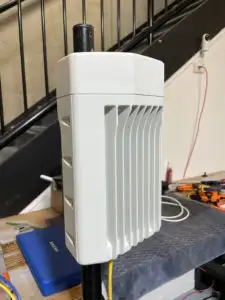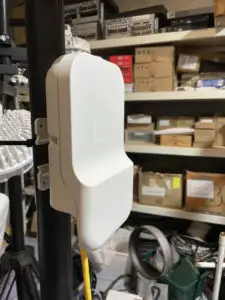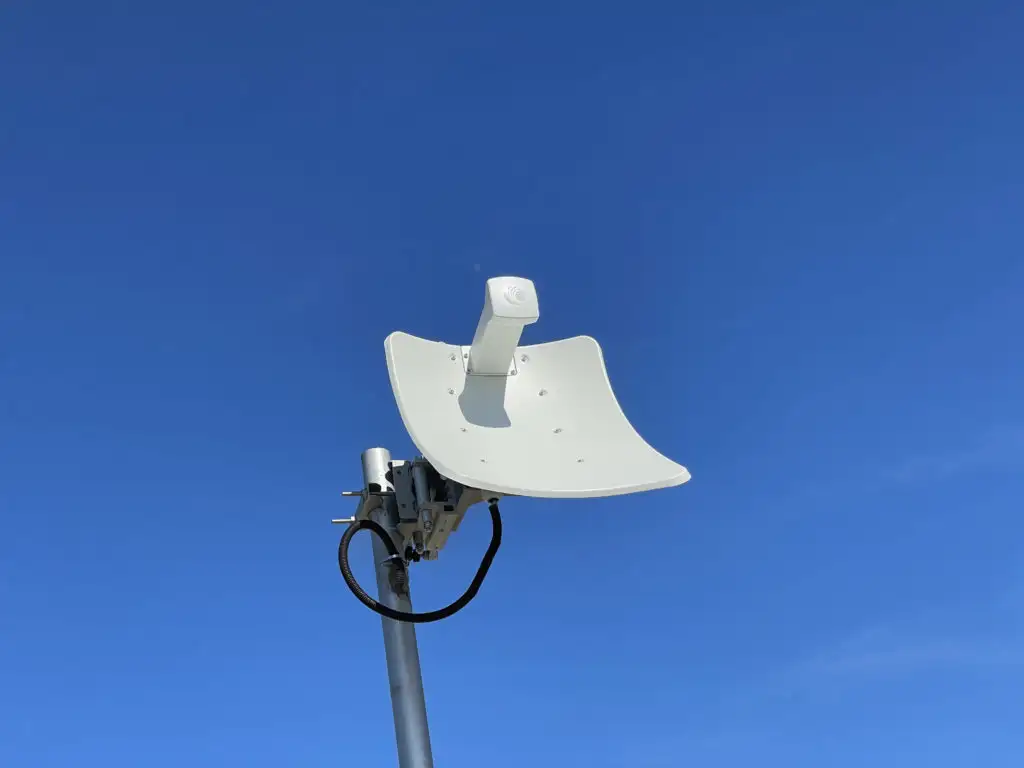Meshing it with new 802.11AY (It’s a bit like taking an aircraft carrier to go shopping!)


I have presented other solutions before based on new 60GHz short haul wireless links. Those are based on 802.11AD technology from Aruba, Ubiquiti and others.
Recently we implemented another solution based on Cambium technology that operates in the 60GHz spectrum also but uses the 802.11AY technology developed originally to build the Facebook Terragraph network.
This equipment is on another level! A bit like taking an aircraft carrier to go shopping!
So, at base level this equipment uses the same spectrum (60GHz) as other (AD based) solutions but the difference is that it is designed to establish carrier grade last mile internet service delivery, at very high speeds. We can also use them in private networks to create very high speed campus mesh networks that self heal or simply high speed point to point or point to multipoint networks.
There are 3 key differences with this equipment:
- In its default state or configuration the equipment creates its own IPV6 network with its individual MAC address forming part of the IPV6 address of any node. So when you power them up, these devices find each other and create their own mesh network using Open/R (OSPFV6 like) routing methodology. In this mode a router using IPV4/IPV6 needs to be connected to the wireless node. Any and multiple nodes can be the POP uplink and will work with BGP protocols for those. Some planning is required but its very straight forward to set up a city wide network.
With a simple click of a software radio button, the system transforms into a more traditional bridged network, much like what we would achieve with Aruba or Ubiquiti. Like most of this gear on the market they rely on GPS receivers for syncronisation.
- The antennas on the Cambium gear is very different. They are a phased array group of antennas in a matrix of 8×8. Other vendors might use 2 or 3 antennas. But Cambium use 64! They rely on phased array antenna principles to aim the antenna. So this means, you can install nodes, roughly align them and the nodes point the antennas to the other nodes electronically – gone are the days of physically aligning antennas and listening to a tone max out. What’s cool is that you can move the nodes about (or the wind can) without re aligning them. The electronic aiming occurs in two dimensions.
The high gain antennas (on the V3000) need a bit of alignment as the aiming will only work within a few degrees but makes the installation so easy I can aim roughly with my eye and the gear does the rest.
- The modulation and speeds are different with AY. AD uses 256 QAM on a single channel. AY uses BPSK modulation (16 QAM) but can uses bonded channels, which means the links are more reliable, faster, less latency, and lower error rates.

The Cambium equipment is more expensive than Ubiquiti but not much more. There is so much more technology and value in this equipment.
With the initial release Cambium are offer three hardware platforms: V1000, V3000, V5000. The 5000 unit is primarily used as a distribution node or the hub of a network. The V3000 is typically used for longer distance because it has a high gain (44.5dB) antenna as a customer node. The V1000 is a small customer node and imagine it as the carrier access device like an NBN modem. The V5000 and V3000 are available in various permutations to support the building of a large network.
